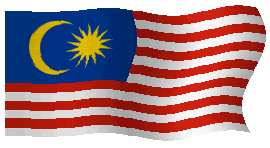
Airplane Parts Definition And Function ( Part 7 ) - Ailerons

Ailerons can be used to generate a rolling motion for an aircraft. Ailerons are small hinged sections on the outboard portion of a wing. Ailerons usually work in opposition: as the right aileron is deflected upward, the left is deflected downward, and vice versa. This slide shows what happens when the pilot deflects the right aileron upwards and the left aileron downwards.
The ailerons are used to bank the aircraft; to cause one wing tip to move up and the other wing tip to move down. The banking creates an unbalanced side force component of the large wing lift force which causes the aircraft's flight path to curve. (Airplanes turn because of banking created by the ailerons, not because of a rudder input.
The ailerons work by changing the effective shape of the airfoil of the outer portion of the wing. As described on the shape effects slide, changing the angle of deflection at the rear of an airfoil will change the amount of lift generated by the foil. With greater downward deflection, the lift will increase in the upward direction. Notice on this slide that the aileron on the left wing, as viewed from the rear of the aircraft, is deflected down. The aileron on the right wing is deflected up. Therefore, the lift on the left wing is increased, while the lift on the right wing is decreased. For both wings, the lift force (Fr or Fl) of the wing section through the aileron is applied at the aerodynamic center of the section which is some distance (L) from the aircraft center of gravity. This creates a torque
T = F * L
about the center of gravity. If the forces (and distances) are equal there is no net torque on the aircraft. But if the forces are unequal, there is a net torque and the aircraft rotates about its center of gravity. For the conditions shown in the figure, the resulting motion will roll the aircraft to the right (clockwise) as viewed from the rear. If the pilot reverses the aileron deflections (right aileron down, left aileron up) the aircraft will roll in the opposite direction. We have chosen to name the left wing and right wing based on a view from the back of the aircraft towards the nose, because that is the direction in which the pilot is looking.
.







































0 comments:
Post a Comment